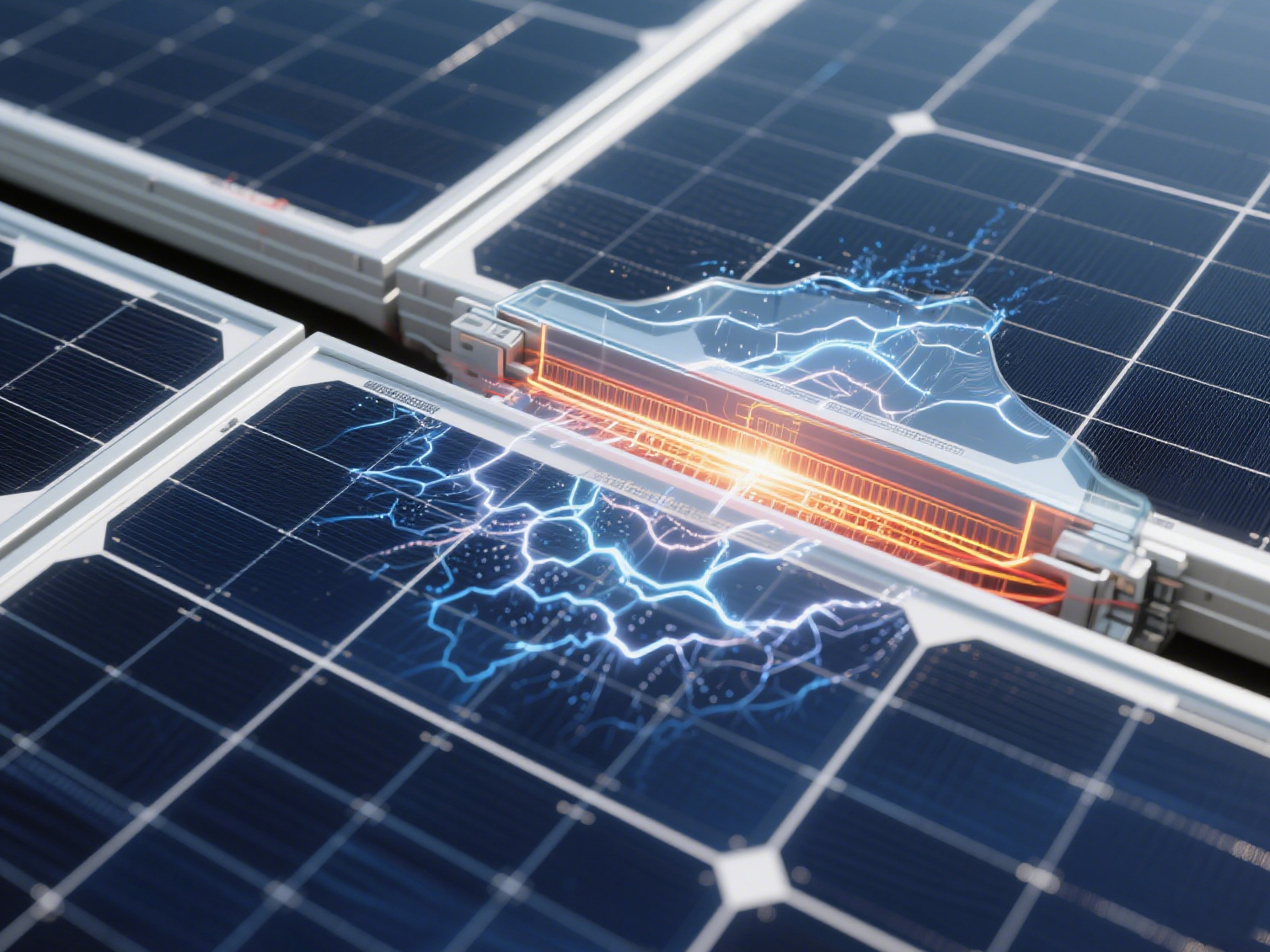

PID: The Invisible Killer of PV Modules


Preface
In the current era where the global community actively practices the concept of sustainable development and vigorously advocates for green energy, the PV industry has shone brilliantly in the energy sector due to its remarkable advantages such as cleanliness and renewability. An increasing number of individuals, enterprises, and even communities are turning their attention to PV systems, hoping to achieve the goals of energy conservation, emission reduction, reduced electricity costs, and even create additional economic benefits through this green energy solution. In the entire PV system, PV modules undoubtedly occupy a core position. The stability of their performance is like the weights on both ends of a balance, directly influencing the level of power generation efficiency and the quality of return on investment.
However, in reality, many selectors of PV systems often fall into a common misunderstanding when selecting modules. They overly focus on two intuitive factors: initial power generation and cost, while ignoring a hidden “invisible killer”—PID. When people are full of hope that installing PV modules will bring economic benefits and convenience to their lives or production, PID lurks silently like an enemy hidden in the dark, ready to launch a fatal blow to the PV system, dampening people’s expectations.
What is PID?
So, why is PID so difficult to prevent, like a ghost constantly threatening the normal operation of PV modules? To solve this mystery, it is necessary to deeply understand the specific mechanism of PID.
As early as 2005, the U.S. company SUNPOWER first noticed this phenomenon in its research on the PV field and initially identified it as a polarization effect. At that time, however, the industry’s understanding of the complex causes and potential impacts behind this phenomenon was still relatively limited. It was not until 2010 that the U.S. National Renewable Energy Laboratory (NREL) and Solon Company invested a great deal of time and effort in in-depth and meticulous research and analysis. Their research results, like a ray of dawn, further revealed the universality of PID risks in PV modules. This discovery successfully attracted widespread attention from the global PV industry, making more people begin to pay attention to the potential problem of PID in PV modules.
PID, the full English name of which is Potential Induced Degradation, refers to potential-induced degradation. Its causes are complex, resulting from the interweaving and joint action of the complex electrical environment in which PV modules are located and various external factors. In actual operation, a PV module is like a precision instrument placed in a complex circuit environment, constantly affected by multiple factors such as electric fields, humidity, and temperature. For example, in a high-voltage environment, the packaging materials of the module may experience insulation failure. The packaging materials that originally provided good insulation undergo changes in their internal molecular structure under the long-term action of high voltage, leading to a decline in insulation performance. This causes current leakage and triggers a series of adverse electrical reactions.
At the same time, the erosion of water vapor and chemical substances is also one of the important factors leading to PID. When water vapor invades the interior of the PV module, ionization occurs under the action of an electric field, generating charged ions. These charged ions undergo chemical reactions with the materials inside the module, forming ionization corrosion and gradually destroying the internal structure and electrical properties of the module. In addition, the accumulation of charges on the surface of the cell cannot be ignored. As the PV module continues to operate, a large number of charges gradually accumulate on the surface of the cell. The accumulation of these charges leads to the deterioration of the passivation effect on the cell surface. The originally good passivation layer can effectively reduce the recombination of electrons and holes and improve the photoelectric conversion efficiency, but the accumulation of charges destroys the stability of the passivation layer, greatly reducing the photoelectric conversion efficiency.
Why Be Alert to PID?
The hazards of PID to PV systems are multi-faceted. First, the most intuitive and significant impact is the substantial decrease in the power generation of PV modules. Take an area with ideal lighting conditions as an example. A well-designed and reliable PV module system can normally generate hundreds or even thousands of kilowatt-hours of electricity stably every month. These electric energies are sufficient to meet the daily electricity needs of an ordinary family, and even for some small enterprises, they can support part of the production electricity. However, once the PID problem quietly emerges, the internal electrical performance of the module will be severely damaged. The originally smooth electron transmission path is hindered, and the photoelectric conversion efficiency is thus reduced.
Under the influence of PID, the originally stable high power generation output per month may be significantly reduced by dozens of kilowatt-hours or more in a short period. For household users, this undoubtedly means the failure of the electricity cost saving plan. They originally expected to reduce electricity bills through solar power generation, but now find that the decrease in power generation makes the family still highly dependent on the traditional power grid for power supply, and the economic advantage is completely lost. For enterprises that rely on solar power generation to maintain production, the impact is more serious. The instability and substantial decrease in power generation may disrupt the entire production plan. Enterprises may have to reduce production scale or even be forced to stop production due to insufficient power supply, resulting in huge economic losses, including not only direct losses caused by production stagnation but also indirect losses such as order delays and customer loss.
Second, the existence of PID can also significantly shorten the service life of PV modules. High-quality PV modules, under ideal usage environmental conditions, usually have a long service life of up to 20 to 30 years. Over this long period, they can continuously and stably convert solar energy into electrical energy, providing users with reliable power supply. However, the emergence of PID is like accelerating the life clock of PV modules, making them enter the “aging period” ahead of schedule or even be scrapped prematurely. This is because the internal potential changes and related physical and chemical processes caused by PID will cause serious damage to the material structure of PV modules.
In terms of cells, PID will lead to the gradual decline of cell performance. As the core component of PV modules to achieve photoelectric conversion, the performance of cells directly determines the power generation efficiency of the modules. Various adverse effects caused by PID, such as charge accumulation and ionization corrosion, will damage the internal structure of the cells, leading to a gradual decline in the electrical properties of the cells and ultimately a significant reduction in power generation efficiency. In terms of packaging materials, PID will deteriorate the sealing performance of the packaging materials. The main role of the packaging materials is to protect the cells from external environmental factors such as water vapor, dust, and ultraviolet rays. But under the action of PID, the chemical structure of the packaging materials changes, and their sealing performance is gradually lost. This makes it easier for harmful substances such as external water vapor and dust to invade the interior of the module, further aggravating the corrosion and damage inside the module and accelerating the aging process of the module.
How to Prevent PID?
Since PID is so harmful, what practical and effective preventive measures should we take in actual operations to resist this “invisible killer” hidden in the dark?
First, in the purchase link of PV modules, we must be cautious and take selecting high-quality products with excellent PID resistance as the primary goal. In the market, there are many types of PV modules, and prices vary. Although price factors will affect our decisions to a certain extent, we must not take price as the primary criterion and ignore the importance of product quality. Quality is the key to ensuring the long-term stable operation of PV modules and effectively resisting PID risks. When purchasing modules, we should pay special attention to the various certifications that the products have. For example, the relevant certifications on PID resistance issued by international authoritative certification bodies are an authoritative recognition of product quality and can provide us with strong quality assurance. Products with such certifications often adopt advanced technologies and processes in the design and production process, which can effectively reduce PID risks and improve the reliability and service life of the modules.
Second, during the installation and subsequent use of PV modules, keeping the system clean and dry is of vital importance. Water vapor and dust, these seemingly insignificant factors, are actually important accomplices in inducing PID. When water vapor invades the interior of the PV module, it will trigger a series of complex electrochemical processes under the action of an electric field. The water molecules in the water vapor will ionize, producing hydrogen ions and hydroxide ions, which will undergo chemical reactions with the materials inside the module, leading to material corrosion, performance degradation, and thus accelerating the generation of PID.
The long-term accumulation of dust on the surface of the module will also have many adverse effects on the PV system. On the one hand, dust will block sunlight, reduce the light intensity, and make the solar energy that the PV module can receive decrease, thus directly affecting the photoelectric conversion efficiency. On the other hand, dust has a certain adsorbability and is easy to adsorb water vapor in the air. When the dust adsorbs enough water vapor, it will form a moist film on the surface of the module, creating favorable conditions for the occurrence of PID. Therefore, regular comprehensive cleaning and maintenance of the PV system are essential. We should use professional cleaning tools and methods to ensure that the surface of the module is spotless. During the cleaning process, we should pay attention to avoiding physical damage to the module. At the same time, we should carefully check the sealing of all parts of the system, especially the key parts such as the frame and junction box of the module that are easy to enter water vapor. Once poor sealing is found, we should repair it in time. By replacing the sealing strips, reinforcing the sealing structure, and other measures, we can minimize the possibility of water vapor entering the interior of the module.
Summary
In conclusion, although the potential hazards of PID do exist, we do not have to panic at the mention of PID. As long as we can correctly and rationally understand the problem fully and take practical and effective preventive measures in all links of PV module purchase, installation, use, and maintenance, we can still make the PV system operate stably and efficiently. Let us work together to give full play to the advantages of solar power generation, move forward steadily on the road of green energy, and contribute our strength to achieving the global sustainable development goal.



 Main Menu
Main Menu


.png)





